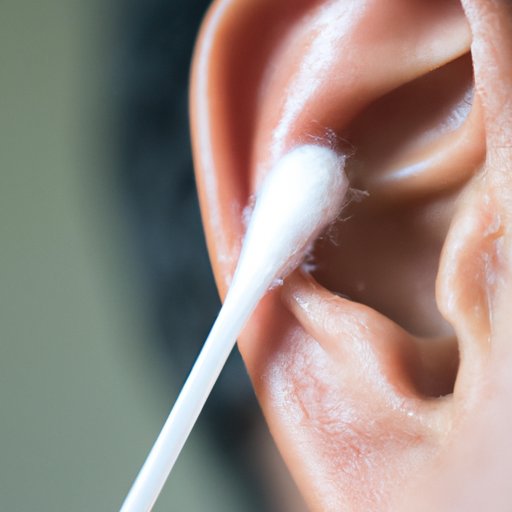How to Properly Clean Ears: A Comprehensive Guide
Keeping your ears clean is important for maintaining overall health and hygiene, but many people do not know the correct way to clean their ears. Improper ear cleaning can lead to a variety of issues including infections, hearing loss, and even permanent damage. In this article, we will provide you with a step-by-step guide on how to properly clean your ears, as well as tips on how to maintain optimal ear health.
Ear Hygiene 101: A Step-by-Step Guide to Safe Ear Cleaning
To properly clean your ears, you should follow the basic steps below:
- Wash your hands to prevent the introduction of bacteria into the ear canal.
- Use a dampened washcloth or towel to wipe the outer portion of your ear. Do not insert the washcloth/towel into the ear canal.
- If desired, use a few drops of a gentle, oil-based ear cleaning solution to soften any wax or debris in the ear canal.
- Tilt your head to the side and use a bulb syringe or ear wax removal kit to gently flush the ear canal with warm water. Do not insert the syringe/kits into the ear canal.
- Gently dry the outer portion of the ear with a clean towel or cloth.
It is important to note that you should never insert anything into your ear canal, including cotton swabs or bobby pins, as this can push the wax deeper into the ear and cause damage to the eardrum.
The Do’s and Don’ts of Cleaning Your Ears at Home
There are a number of dos and don’ts to keep in mind when cleaning your ears:
Do
- Wash your hands before cleaning the ears.
- Use only a dampened washcloth or towel to clean the outer portion of the ear.
- Use oil-based ear cleaning solution to soften wax or debris in the ear canal before flushing.
Don’t
- Insert any object into the ear canal, including cotton swabs, bobby pins, or any other tool.
- Ignore signs of discomfort or pain during ear cleaning.
- Use a high-pressure stream of water to flush the ear canal, as this can cause damage to the eardrum.
By following these dos and don’ts, you can keep your ear cleaning safe and effective.
Expert Tips for Keeping Your Ears Healthy and Clean
In addition to safe ear cleaning practices, there are some other things you can do to maintain optimal ear health:
- Protect your ears from loud noises by wearing earplugs or earmuffs when in loud environments.
- Avoid putting objects in your ears, including earphones or earbuds.
- Avoid exposure to excessive moisture, which can lead to ear infections.
- If you experience discomfort or pain in your ears, seek professional medical help.
- Regularly clean your hearing aids or other hearing devices to prevent the accumulation of dirt and bacteria.
Why Cotton Swabs are Not the Best Tool for Ear Cleaning and What to Use Instead
Cotton swabs or Q-tips are commonly used to clean the ears, but they are not an effective or safe tool for this purpose. When used to clean the ears, cotton swabs can push the wax deeper into the ear canal, leading to impaction or damage to the eardrum.
Instead of cotton swabs, try using an ear wax removal kit, which typically includes a bulb syringe and a saline solution. These kits are safe and effective for flushing the ear canal and removing any buildup of wax or debris.
The Importance of Regular Ear Cleaning and How to Do It Without Causing Damage
Regular ear cleaning is important for maintaining ear health and preventing the buildup of wax or debris in the ear canal. How often you need to clean your ears will vary depending on the individual, but in general, it is recommended to clean the ears once a week.
To clean your ears on a regular basis, follow a similar process as outlined in the ear hygiene 101 section. Use a dampened washcloth or towel to clean the outer portion of the ear, and if desired, use an oil-based ear cleaning solution to soften any wax or debris in the ear canal. Flush the ear canal with warm water using a bulb syringe or ear wax removal kit, and then gently dry the outer ear with a clean towel or cloth.
It is important to pay attention to any changes in your hearing or discomfort/pain in the ear, as this may indicate a more serious ear issue that requires professional medical help.
Conclusion
Proper ear cleaning is an important part of maintaining overall health and hygiene. By following safe ear cleaning practices, avoiding harmful tools like cotton swabs, and seeking professional medical help when necessary, you can keep your ears healthy and clean for years to come.
Remember, never insert anything into your ear canal, and always watch for signs of discomfort or pain during ear cleaning. If you have any concerns about your ear health, seek professional help from a trusted medical provider.
